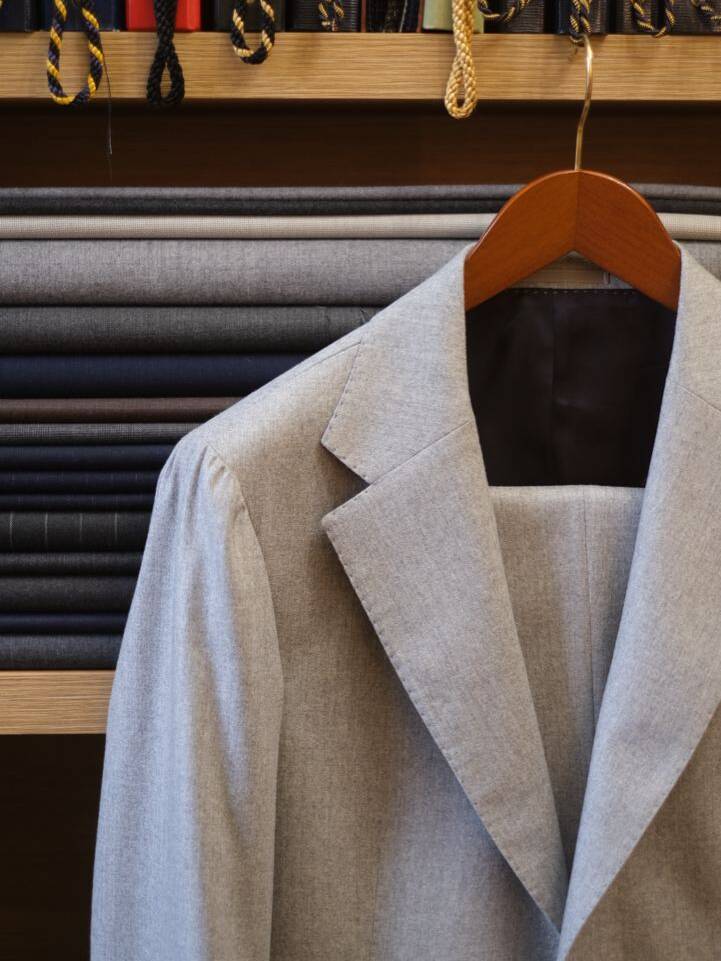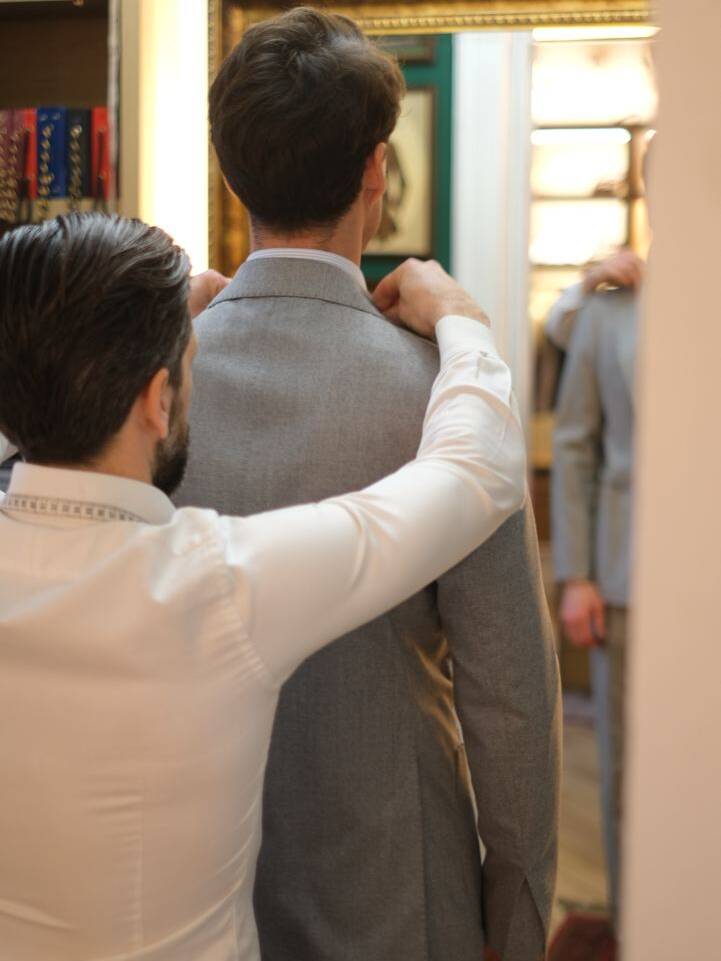In this article, we will talk about two main approaches to suit construction: the modern, quicker Glued Method and the more traditional, handcrafted Full-Canvas Method. We walk you through the unique features, pros, and cons of each approach to give you the insight to make your perfect suit choice.
Glued Method of Suit Construction
The glued method is a modern and quicker way of making suits, where the main structural element is a glued canvas that’s attached to the front panels of the jacket to give it shape.
Key Features of Glued Method
1. Use of glue: Instead of stitching layers of fabric and padding together, this method uses glue to attach the inner lining to the outer fabric of the jacket.
2. Simpler and cheaper: It’s faster and more affordable because it requires less manual labor and reduces production time.
3. Less durable: Over time, the glue can weaken, leading to bubbling or deformation in the fabric.
4. Less breathable: The glue reduces air circulation, making these jackets less comfortable to wear for long periods.
5. Fixed shape: Jackets made with this method hold their shape well when new, but may feel stiff and less flexible with regular wear.
Full-Canvas Method of Suit Construction
The full-canvas method is a traditional and more complex way of making a suit. It uses a canvas, an internal layer made from materials like horsehair and wool, that is stitched between the outer fabric and the lining. This gives the jacket structure but allows flexibility.
Key Features of Full-Canvas Method
1. Handcrafted: A full-canvas jacket requires skilled, detailed handwork, making it more expensive.
2. Natural materials: The canvas is usually made from natural materials like horsehair, wool, or linen, which provide structure but remain flexible.
3. More durable: These jackets last longer because natural materials retain their shape better over time.
4. Breathable: Full-canvas jackets allow better air circulation, making them more comfortable, especially for long wear.
5. Natural fit: Over time, a full-canvas jacket molds to the wearer’s body, becoming more comfortable.
What Is a Canvas?
The canvas is the internal structure sewn into the front part of the jacket to give it shape and support. Unlike the glued method, where glue holds the layers together, the canvas method uses fabric layers stitched together. Common materials for the canvas include:
– Horsehair
– Wool
– Linen or other natural fabrics
These layers are placed between the outer jacket fabric and its lining, creating a “frame” that gives the jacket structure.
Types of Canvas Constructions
1. Full canvas: The canvas layer extends across the entire front of the jacket, from the shoulders to the hem. This method offers maximum support and is considered the highest-quality construction.
2. Half canvas: The canvas only covers the upper part of the jacket, from the shoulders to the mid-chest. It’s a lighter and cheaper option but provides less structure.
Which Method Is Better?
– Glued method is suitable for those looking for a cheaper option with a stiff, well-defined shape right out of the box. It’s a good choice if you don’t wear a suit often or don’t need it to last a long time.
– Canvas construction is ideal for those who value quality, comfort, and durability. Canvas suits adapt to your body over time and become more comfortable as you wear them.
Fact in the Spotlight
The first atelier that specialized in tailoring classic men’s suits was opened by Henry Poole in 1806 on the famous Savile Row in London. His workshop became a pioneer in creating custom-made suits, known for their precise cut and highest quality. Henry Poole and his atelier are considered the founders of the British “bespoke” tradition, where each suit is made individually based on the client’s measurements. Over time, Savile Row became the world capital of men’s tailoring, and many famous tailors continue this tradition today.
Quote of the Week
All the world’s a stage, and all the men and women merely players.
William Shakespeare
That’s all for today. See you on Saturday next week!
Yours sincerely, Anton Masko










